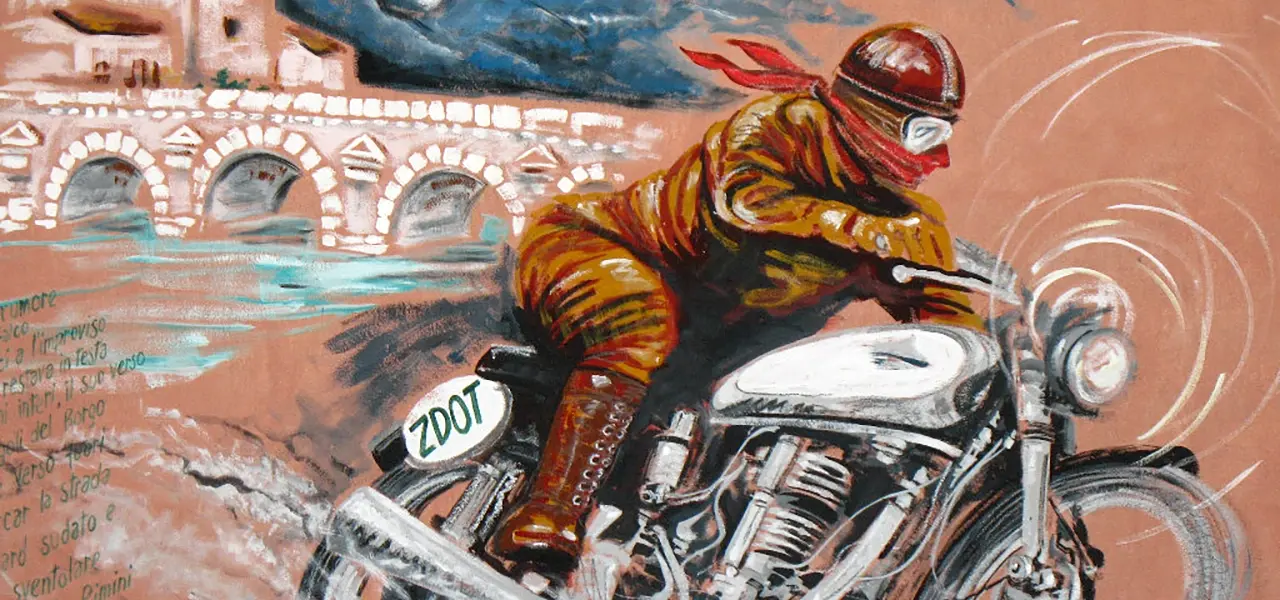SHARRYLAND


Borgo San Giuliano in Rimini: the murals and the history
The narrow streets, the houses, low and colorful, its murals


Where is

What is and where is the San Giuliano neighborhood
It's nice to stroll through the borough, getting lost in the colorful alleys, looking for the nooks and crannies of greenery, the lively little squares, the murals that have been added from year to year in the total anarchy that becomes both chaos and harmony. You can find Gradisca there, limply reclining on a sofa, Fellini in his camel coat, Giulietta Masina as Gelsomina, Scureza with her roaring motorcycle, the Tabaccaia in her low-cut sky-blue sweater.
Not to be missed: the most beautiful murals.
But the ones that excite the most are the murals dedicated to the inhabitants who have made the history of the village, the fisherman, the fiaccheraio, the caldarrostaia, and above all the very curious mural of nicknames, "E mur di soranom," conceived by Tonino Guerra: a census of the old inhabitants who, next to the names of the dead, adds their wacky nicknames, La Nina Cioda, Cativéria, Mezmilion, Pirinela, Belabarba, Scureza.
What not to miss
What you can't miss in Borgo San Giuliano, aside from a goderecent stop in one of the many small bars, for a drink or dinner, is a visit to Rimini's emblem, the Tiberius Bridge, the Roman bridge that forms the first section of the mythical Via Emilia, five arches made of Istrian stone, all different and miraculously intact, decorated with blind windows. Around it was built on one side the Water Square, an equipped green space for citizens and tourists to stop and sit, and on the other a wooden footbridge. Between them are hundreds of buoys that are charged with light during the day and glitter on the water at night.
A bit of history
Borgo San Giuliano originated in medieval times and developed around the abbey of the same name, across the river from the old town. It was a hamlet of fishermen and fiaccherai, the drivers of the fiacre, horse-drawn carriages; in the 19th century it was a somewhat infamous place and, above all, a den of anarchists.
Fun fact: a surviving neighborhood
In the Fascist era the entire part facing the Marecchia was demolished. A backlash against the inhabitants, who had made the village a stronghold of Romagna's resistance to fascism. "An act of prevention and social redemption," said the regime, but it was pure and simple revenge. It almost seems as if the architects had it in for the borgo: in the 1970s, a further redevelopment project called for its complete disruption. The outraged residents organized the Festa del Borgo against the wretched project, began to renovate the houses themselves and make the first murals, and succeeded in blocking it. And they haven't stopped since.
Enter the Map of Italy's Undiscovered Wonders and find treasures where you least expect it... Inspire, Recommend, Share...
The Map thanks:
Enter the Map of Italy's Undiscovered Wonders and find treasures where you least expect it... Inspire, Recommend, Share...
Where is


